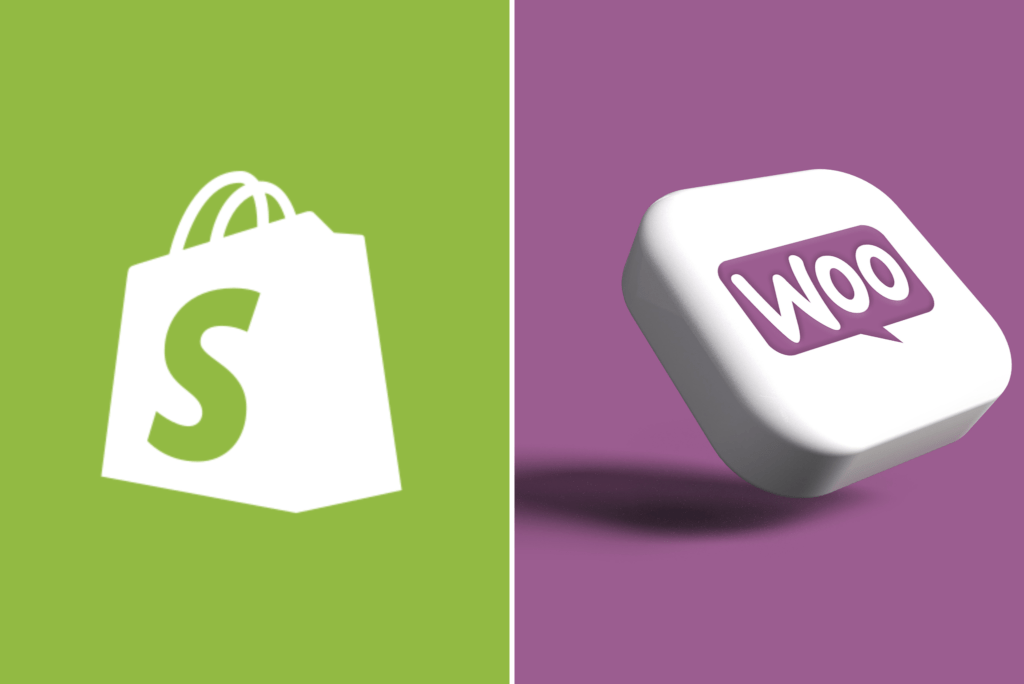Cross-border e-commerce payments per country
Online sales are becoming increasingly globalised and customers’ payment preferences are strongly influenced by local habits. In Europe, where borders between countries are becoming increasingly fluid, understanding preferred payment methods is becoming crucial for successful cross-border e-commerce.
In this article, I will look at the differences in preferred payments in cross-border e-commerce across EU countries. I will analyse what factors shape customers’ local payment choices and what implications await businesses operating internationally. Taking into account the changing e-commerce industry and consumer trends, I will examine which payment methods are most popular in each country and what strategies entrepreneurs can adopt to successfully adapt to their customers’ expectations.

Publication date:
Update date:
04.11.2024
Does adjusting the form of payment per country affect sales?
Adapting the form of payment to specific countries can have a significant impact on sales. Payment restrictions can result in the loss of potential foreign customers.
In Europe, differences in payment methods between countries are quite significant. For example, debit or credit card payments are popular in some countries, while mobile payments or bank transfers dominate in others. Ignoring these differences and using a one-size-fits-all payment method can lead to the loss of customers and reduced sales.
It is therefore important for cross-border sales companies to adapt their payment systems to local consumer preferences and habits. This will enable them to exploit the full potential of the foreign market and increase their company’s competitiveness in the international arena.
Payment methods per country
Below, I will conduct a detailed analysis of the preferred payment methods in each country and provide practical tips for entrepreneurs aiming to succeed in international e-commerce markets.

Germany
In 2023, the German market in terms of payments for online purchases was divided. The biggest slice of the pie went to PayPal, which dominated the e-commerce industry with a share of as much as 93.2% among all verified online shops. And while PayPal is the undisputed leader in the e-wallet category, other options are also popular. VISA and Mastercard take a share of 82.2% and 82.1% respectively, while bank transfers and cash payments rank on the same level at 77.3%. Nevertheless, it should be noted that the popularity of some payment methods shows some fluctuations. For example, Sofortüberweisung, despite gaining a 53.1 per cent share, is losing out to e-wallet giant PayPal. This variation points to the need for flexibility on the part of entrepreneurs, who must constantly adapt to the preferences of their German customers.
Check out our article: LUCID in 2024: Understanding Registration and Costs in Germany
UK
In contrast to the German e-commerce market, the UK market is dominated by one method – payment cards. In 2023, VISA is the undisputed leader, offered in up to 97.1% of all online shops. Both Mastercard and American Express, with 97.1% and 61.6% respectively, are widely used by online merchants as preferred payment methods. In addition to payment cards, other options are also gaining adherents. PayPal, a powerhouse among electronic wallets, is offered in 82.1% of online shops, while Apple Pay is gaining popularity being available to customers in 19.9% of shops. This clear dominance of payment cards indicates their widespread adoption among consumers in the UK e-commerce market and a continuation of the upward trend in the online payment sector.
France
In 2023, in the French e-commerce market, as in other European markets, payment cards dominate as the main form of online payment. VISA is the clear leader, offered in an impressive 96.3% of all online shops. Both Mastercard and CB (Carte Bancaire), with 96.1% and 63.6% respectively, are widely used by merchants. Despite the dominance of payment cards, other payment methods are also finding their place in the French e-commerce market. PayPal, which is a popular choice in the e-wallet category, is offered in 79% of online shops, while traditional bank transfers and cash in advance payments are available to customers in 51.3% of shops. This diversification of payment options demonstrates the diversity of consumer preferences in the French e-commerce market and the need for flexibility on the part of businesses, which must adapt their strategies to changing trends and customer expectations.
Check out our article: Packaging registration in France – EPR
Italy
In 2023, the Italian e-commerce market showed a complex structure in terms of the payment methods offered. The undisputed leader is the VISA card, available in as many as 95.2% of all online shops, demonstrating its exceptional popularity among Italian consumers. Mastercard also plays an important role, being offered in 94.5% of shops, representing a significant share of the online payment market. Slightly behind, but still significantly present, is PayPal, which gained a share of 90.7%, confirming its position as one of the main options in the e-wallet category. Traditional bank transfers are also popular, with a share of 64.7%, meaning that they are still an important part of online payments in Italy. Nevertheless, not all payment methods maintain as high a level of popularity as payment cards. For example, the cash on delivery option, despite holding a share of 51.8%, is losing ground to the dominant VISA, suggesting changing consumer preferences and an evolution of payment strategies in the e-commerce industry in Italy.
Austria
In 2023, the Austrian e-commerce market showed a complex structure in terms of available payment methods. The largest percentage went to VISA cards, which are offered in 92.0% of all online shops. This dominance confirms its strong position in the Austrian online payment market. Mastercard also plays an important role, with a share of 91.8%, confirming that payment cards are the preferred option for consumers in Austria. Despite this, other payment methods also enjoy considerable recognition. PayPal, which is the leading e-wallet, is offered in 83.2% of online shops, demonstrating its popularity among Austrian consumers. In addition, traditional bank transfers and prepaid payments are still an important part of online payments, albeit with a 56.9% share. It is worth noting that despite the dominance of payment cards, Sofortüberweisung, with a share of 55.6%, still holds a significant position in the Austrian market.
Spain
In 2023, the Spanish e-commerce market showed the dominance of payment cards as the main mode of online payment. VISA, which is the leader in this field, is offered in up to 95.0% of all online shops, demonstrating its wide adoption among Spanish consumers. Both Mastercard and American Express, with shares of 94.7% and 41.5% respectively, also play an important role, confirming the high popularity of payment cards in the Spanish market. Despite the dominance of cards, other payment options are also finding their place. PayPal, which is the leader in the electronic wallet category, is offered in 83.2% of online shops, demonstrating its significant role in facilitating online payments for Spanish customers. In addition, traditional bank transfers and prepaid payments are available to customers in 53.3% of shops, suggesting that despite the rise in popularity of electronic payments, there is still demand for traditional payment methods in Spain. This diversity of payment options shows that the e-commerce market in Spain is dynamic and flexible, adapting to changing consumer preferences and needs.
Netherlands
In 2023, the Dutch e-commerce market is clearly centred around a few key players. VISA cards are dominant, accounting for as much as 93.0% of all available payment options in the online shops surveyed. Nevertheless, the competition is not far behind, as Mastercard with a 92.5% share, iDEAL with 91.7%, and PayPal with 78.3% are all competing for their place in this dynamic market. It is worth noting that although traditional payment methods such as bank transfer are still present, their reach: 40.6% is already significantly lower compared to giants such as VISA. This clearly shows the evolution of consumer preferences and the dynamics of change taking place in Dutch e-commerce.
Belgium
In 2023, the Belgian eCommerce market looked similar to the Dutch one. VISA cards are the most common, and with a share of 93.8%, they are the main payment method in the online shops surveyed. As in the case of the Netherlands, the competition is not sleeping. Mastercard with a share of 93.3%, PayPal with 70.0%, and Bancontact with 68.8% are also gaining a foothold in the Belgian e-commerce market. It is worth noting that traditional payment methods such as bank transfer are losing ground, reaching a share of only 45.5% compared to the dominant position of VISA cards. This clearly illustrates the evolution of consumer preferences and the dynamics of change taking place in the context of online payments.
Ukraine
In 2023, the Ukrainian eCommerce market presented a unique picture of payment methods, where dominance belonged to one main form of payment – cash on delivery, which accounted for an impressive 91.6% of all available options in the surveyed online shops. In addition to this most popular form, there are also other methods. VISA and Mastercard, both with a 70.1% share, and traditional bank transfer with a 56.1% share, compete for their place in the Ukrainian e-commerce market. It is worth noting that despite the existence of e-wallets such as Privat24, which has a share of 27.1%, payment on delivery is still the preferred option for most customers. This specific payment dynamic in the Ukrainian market highlights the unique preferences and behaviour of consumers in the country.
Check out our article: Ukraine ecommerce 2023 Analysis5 steps on how to successfully start selling to Ukraine
Payment methods on popular marketplaces by country
Online shopping has become hugely popular around the world, and marketplaces have become key platforms that allow consumers to access a wide range of products. Depending on the country, preferences for payment methods may vary. Below is an overview of popular payment methods on different marketplaces in selected countries.

Germany Amazon.de
Amazon.de offers a variety of payment methods that are tailored to the preferences of German consumers:
- Credit and debit cards: Mastercard, American Express, Visa, Visa Amazon.de and prepaid versions of these cards
- Direct debit (in EUR): a fast and convenient bank transfer method
- Instalments at Barclays: payment by instalments possible
- Monthly invoice: payment based on an invoice for purchases made in a given month
- Gift cards and promotional vouchers: Amazon.de Gift Cards and promotional codes
- iDEAL: Popular online payment method in the Netherlands
- Przelewy24 (P24): Polish online payment method
- Bancontact: Belgian payment method
- BLIK: Polish mobile payment system
Germany eBay.de
eBay.de offers a variety of payment methods for German consumers:
- Credit and debit cards: accepted in most categories
- Apple Pay and Google Pay: mobile payment methods
- Klarna: Klarna invoice, Klarna instant transfer, Klarna instalment purchase
- PayPal: popular online payment method
United Kingdom Amazon.uk and eBay.co.uk
Amazon.uk offers a wide range of payment methods tailored to UK consumers:
- Credit and debit cards: Visa, MasterCard, American Express, Maestro from the UK
- Credit and debit: ability to pay for purchases using Visa debit and credit cards
- Instalments through Barclays: instalment payment option
- Amazon monthly payments: purchases on a monthly invoice
- Payment with points: ability to pay for purchases with loyalty points
eBay.co.uk
eBay.co.uk offers a variety of payment methods to suit the preferences of UK customers:
- PayPal and PayPal credit: Popular payment methods on eBay
- Credit and debit cards made available through PayPal
- Credit and debit cards: Visa, MasterCard, American Express, Maestro from the UK
- Apple Pay and Google Play: mobile payment methods
- Interbank transfers, cheques, postal orders: traditional payment methods on eBay
- Online payment services: Allpay.net, CertaPay, Nochex.com, XOOM
- Payment on delivery
France Amazon.fr
Amazon.fr offers a range of payment methods to suit the preferences of French consumers:
- Bancontact: Belgian payment method
- Gift cards and prepaid cards: Amazon Gift Cards and prepaid cards
- Cofidis: credit options and payment by instalments (4x bank card from Cofidis, credit option at Cofidis, 4 payments via Amazon)
- Direct debit from SEPA bank account: fast and secure payment method
- Credit and debit cards: CB, Visa, MasterCard, American Express
Italy Amazon.it
Amazon.it offers a variety of payment methods that are popular in Italy:
- Credit and debit cards: Visa, Visa Electron, MasterCard, American Express, Maestro International (international travel card), Nexi
- Prepaid cards: Postepay, PayPal (connected to Visa or MasterCard), Paysafe, SKRILL (connected to MasterCard)
- SEPA Direct Debit: direct debit from current account
- Payment in cash: at an ATM or at the nearest shop
- Payment by monthly instalments: financing through Cofidis CreditLine
Spain Amazon.es
Amazon.es adapts its payment methods to the preferences of Spanish consumers:
- Credit and debit cards: Visa, Visa Electron 4B, Euro6000, American Express, MasterCard, Maestro International
- Automatic payment through bank account: direct debit
- Instalment options: payment in 4 instalments via Amazon or Cofidis
- Cofidis credit line: possibility to finance purchases
The Netherlands Amazon.nl
Amazon.nl offers popular payment methods in the Netherlands:
- Credit cards: MasterCard, American Express, Visa and prepaid versions of these cards
- Amazon gift cards/coupons: ability to pay with Amazon vouchers
- Promotional certificates: Amazon.nl promotional discount
- iDEAL: a very popular online payment method in the Netherlands
- Bancontact: Belgian payment method
Marketplace payment applications
Each marketplace has its own unique preferences for payment methods that reflect local habits and financial infrastructure. As you can see ,marketplaces tailor their payment offerings to consumer expectations, which is crucial to their success. Understanding these preferences is important for merchants looking to expand into new markets.
Adapting payment strategies to local preferences in European countries
In conclusion, an analysis of thepreferred payment methods in cross-border e-commerce in European countries clearly shows that adapting payment strategies to local preferences is crucial for the success of foreign sales.
Adapting your payment strategy to the specifics of each country can make your business more competitive on the international market. Flexibility and adaptation to local preferences are key to attracting and retaining customers from different countries. In the globalised world of e-commerce, understanding cultural and payment differences is crucial to the success of international businesses.
Take care of this today and ship your products outside of Poland!
And if you’re thinking about logistics, check out Global24‘s offer for international returns and shipping with a local courier and warehouse address.
Feel free to contact us!
Do you want to be up to date?
Subscribe to the newsletter
Subscribe to the CROSS-BORDER LETTER newsletter! Learn about news, tricks and secrets in foreign logistics. Check how to sell abroad and achieve more benefits.






